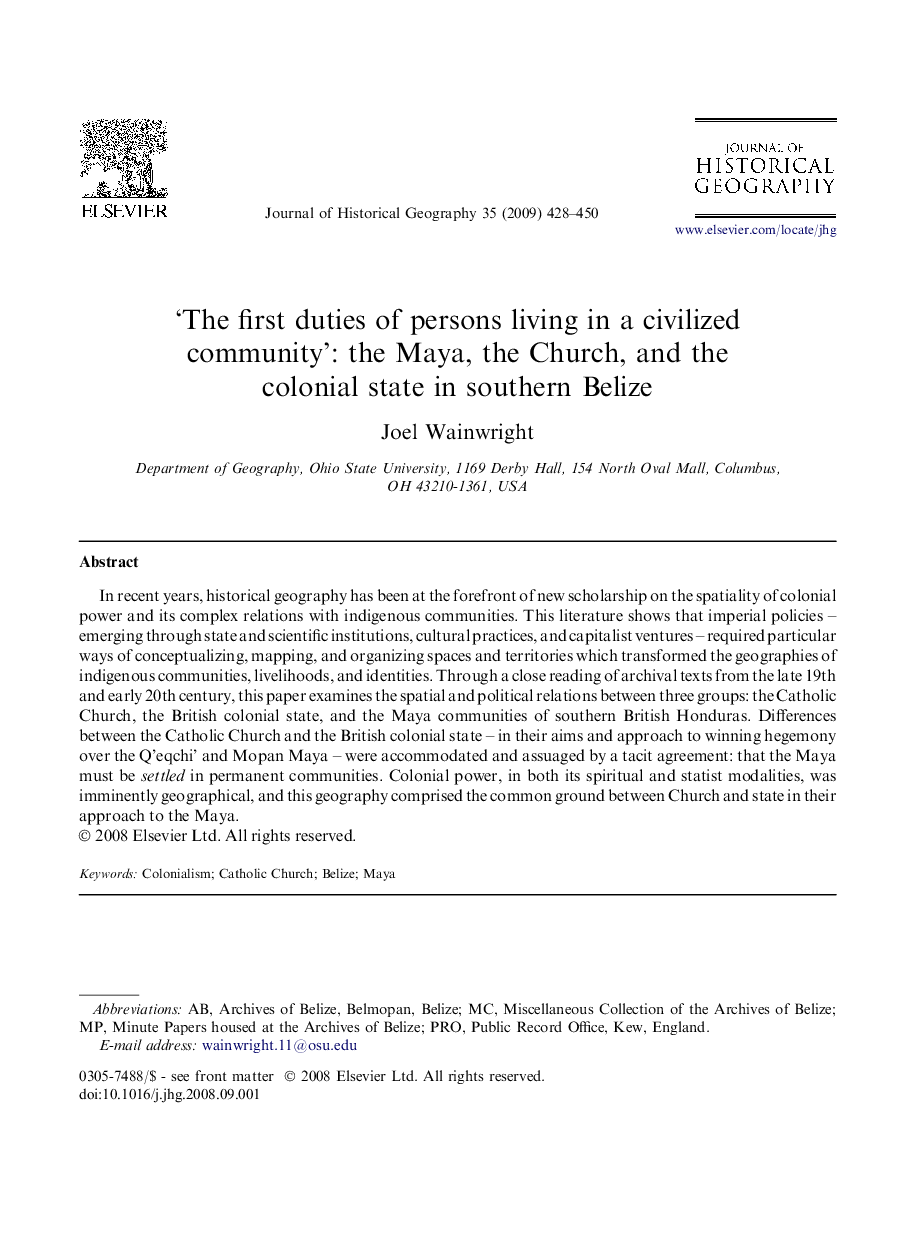| Article ID | Journal | Published Year | Pages | File Type |
|---|---|---|---|---|
| 1039297 | Journal of Historical Geography | 2009 | 23 Pages |
In recent years, historical geography has been at the forefront of new scholarship on the spatiality of colonial power and its complex relations with indigenous communities. This literature shows that imperial policies – emerging through state and scientific institutions, cultural practices, and capitalist ventures – required particular ways of conceptualizing, mapping, and organizing spaces and territories which transformed the geographies of indigenous communities, livelihoods, and identities. Through a close reading of archival texts from the late 19th and early 20th century, this paper examines the spatial and political relations between three groups: the Catholic Church, the British colonial state, and the Maya communities of southern British Honduras. Differences between the Catholic Church and the British colonial state – in their aims and approach to winning hegemony over the Q'eqchi' and Mopan Maya – were accommodated and assuaged by a tacit agreement: that the Maya must be settled in permanent communities. Colonial power, in both its spiritual and statist modalities, was imminently geographical, and this geography comprised the common ground between Church and state in their approach to the Maya.
